www.johntyman.com/peru/11.html
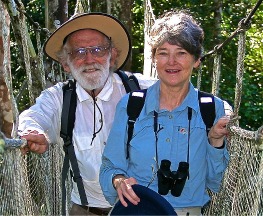 |
CULTURES IN CONTEXT PERU The Incas and Prehistoric Cultures IV: INCA CULTURE 4.3: The Inca Empire and Governance |
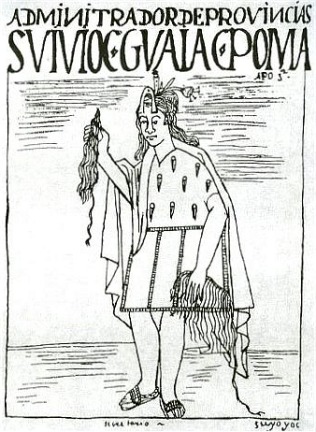
113. The Inca Empire was controlled by an administrative organization that gave the rulers effective control of the population and guaranteed them labour and food. Their society was highly organized. Inca territory was divided into four great administrative zones or suyus. |
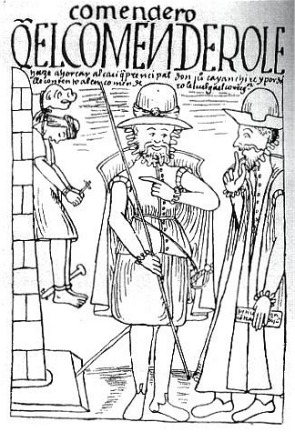
114. More senior administrators travelled further afield. Poma refers to them as “mortal enemies of the principle chiefs who defend the Indians, (because) they tried to hang everybody” who threatened their authority. |
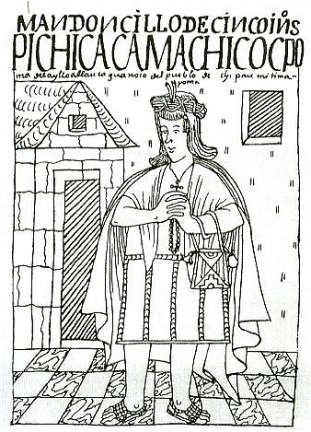
115. The head of each family was the basic unit of authority, and the population was divided into a system of groups of increasing size: 5 families, 10 families, 50 families, 100, 500, 1,000, 5,000 and 10,000 families. Each group had a head who supervised cropping, livestock production, and industrial work … whose authoritarian power increased until it reached that of the Inca. A chief of five Indians, like this one, had to “distinguish himself from the higher-ranking men by wearing Indian style clothing.” (Poma page 249) |
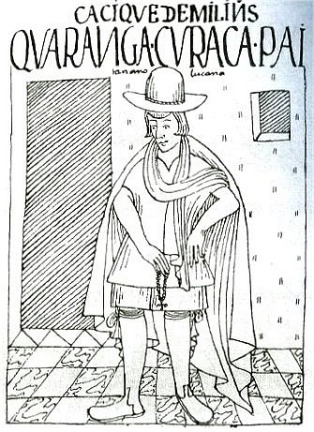
116. A chief of a thousand tributary Indians had to collect taxes and “ensure that no Indians are missing, otherwise he will lose the title of ‘leader of a thousand’.” To distinguish themselves from less important officials “they must wear a sombrero, neckerchief, boots, cloak and vest”. (Poma page 246) |
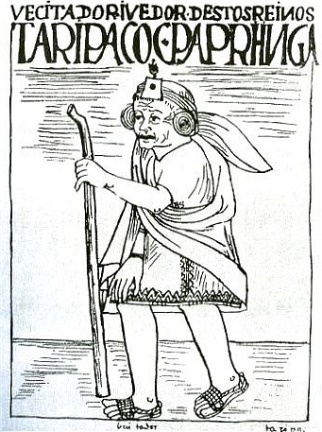
117. The hierarchy, in which each level of authority only had contact with the one immediately above it, was controlled by inspectors who travelled all over the place recording the amount of produce, the number of cattle, the population by age groups, and a host of other items. (A travelling inspector) |
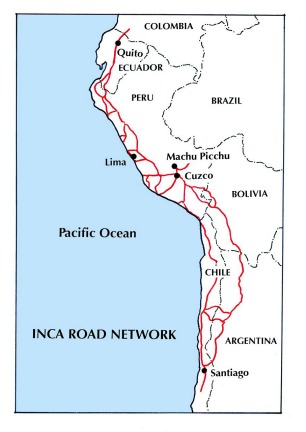
118 The Incas bound their empire together with a great network of roads. Trunk roads ran along the coast and also south from Lake Titicaca, and there were innumerable local roads connecting all the villages of the empire. However, people never travelled on their own business or for pleasure then, but at the order of the Inca or a local official. Anyone who moved without being ordered to do so was punished for vagrancy. |
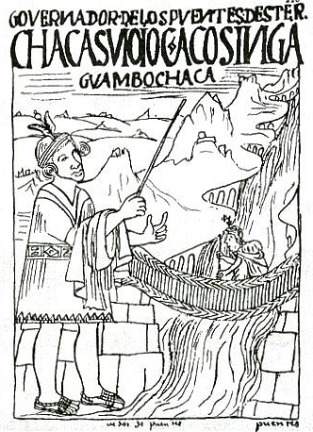
119. The Inca road network extended for almost 40,000 kms, and is considered by some to be the world’s largest archaeological monument. The roads varied in width between a half and ten metres, depending on the topography. Highland roads were typically paved, and edged with a low wall. On particularly steep slopes roads were replaced by steps … hundreds, even thousands of them. It was, after all, a road for foot traffic and pack animals, like sure-footed llamas. Suspension bridges made of straw or rope were built across rivers and, like bridges in most countries today, they were inspected from time to time. (Inspector of Bridges) |
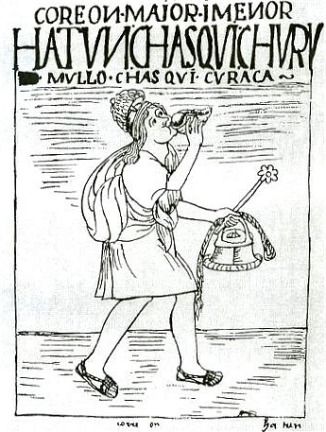
120. Long distance communication was maintained by the use of teams of professional runners (or “chasqui”) who in relays could cover almost 300 kilometres in a day. They were able to carry messages more swiftly than the Spaniards could on horseback; and lived in groups of between 4 and 6 runners in thatched huts located on main roads spaced a quarter of a league apart (approximately 1.4 kilometres).They carried a conch shell which they could sound to announce their approach, allowing a speedy changeover. They were not allowed to have wives or children because they worked non-stop around the clock. Along many of these routes the government provided tambos, or resting places for authorized travellers (like officials) providing them with food and accommodation. |
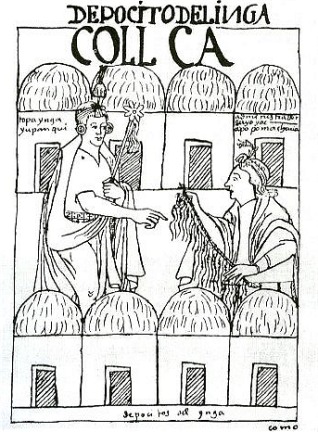
121. Along main roads the Inca also provided colcas (storehouses) for food, clothes and weapons for use in times of war. Granaries like these ones were also located along local roads and built of earth and straw. They held between 75 and 450 bushels. The Inca’s harvests and those of the Sun were stored separately, but in the same way as the rest of the people. The weapons stored on main roads came from different regions, according to the materials available. One region might supply bows and arrows, and another lances or javelins, others hatchets, clubs, slings or shields. “These were all the arms used by the Indians” (According to La Vega, page 169.) Such storehouses were located 3 leagues (approximately 15 kilometres) apart and the Spaniards turned them into inns. |
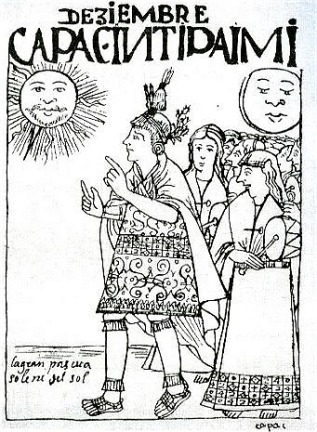
122. The Incas adopted the sun (Inti) as their supreme god. They also revered Inti’s wife the moon (Killa), Venus, and 6 special stars. The senior priest or “sacred head” lived surrounded by other priests and people who were at his service, including beautiful acllas, “chosen virgins,” who were given by the people for the use of the Inca and the chief priest. The chosen virgins lived apart in an Aclla Huasi rather like a nunnery. (Priest at December festival.) |
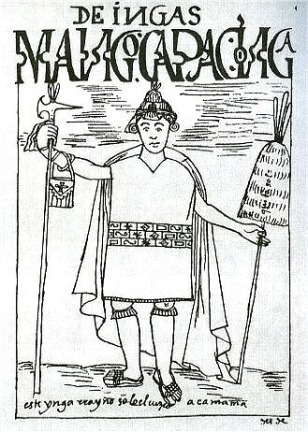
123. The Inca himself was believed to be of divine origin, and exercised absolute authority. He always married his older sister (or coya). He was allowed a great number of concubines, but his legitimate heir had to be the son of the legally recognized wife, that is to say, his sister. Manco Capac, the first Inca (illustrated) said the sun was his father and the moon his mother. The Inca ate and drank only from gold and silver vessels, wore shoes with silver soles, and a gold mask on ceremonial occasions. |
![]()
Text and photos by John Tyman
Intended for Educational Use Only.
Contact Dr. John Tyman at johntyman2@gmail.com
for information regarding public or commercial
use.
![]()
www.hillmanweb.com
Photo processing, Web page layout, formatting
and hosting by
William
Hillman ~ Brandon, Manitoba ~ Canada